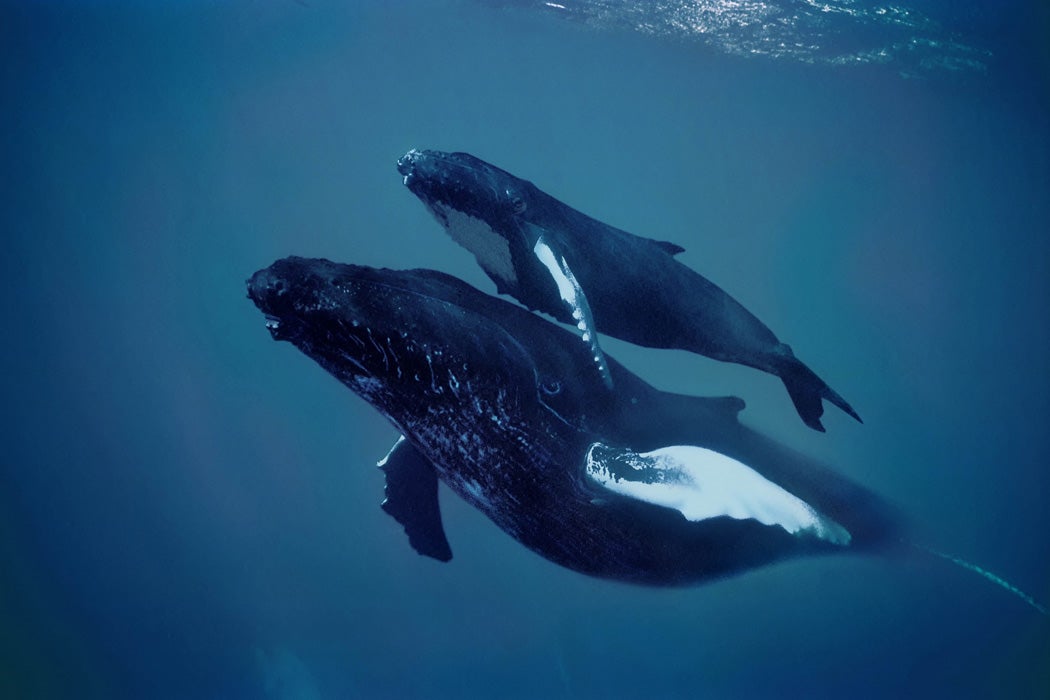The humpback whale’s remarkable song is one of the best known underwater songs. Hauntingly beautiful, the songs of male humpbacks have been the subject of much research—and the topic of at least one Star Trek Movie. To the casual listener, the songs may seem similar, despite their complexity. But listen closely and it becomes clear that the song of the humpback is far from universal.
According to David Helweg and his colleagues, writing in Behavior, humpback songs can last for hours. While there is some singing along migration routes, the singing peaks at areas and times related to reproduction. The males sing the most complex songs, but the females make some music of their own and do seem to listen to the males. To this day, nobody knows exactly how it works, but in some way, the song improves male reproductive success.
Individual songs are complicated enough, consisting of sets of sounds within other sounds. There seems to be some individual improvisation, but Helweg describes clear evidence of different dialects of songs. Populations of whales from a given area sang songs that were different from other populations with which they had limited contact. The farther apart two groups were, the more different the sounds were. For example, Indian Ocean humpbacks sound very different from Pacific Ocean humpbacks, while different populations within the same general part of the Pacific will share more elements and song structures.
The songs are loud, but probably only travel tens of kilometers. Assuming whales pick up song ideas from other whales, they need to be relatively close by to hear them, helping to maintain differences between widely separated groups. Nevertheless, the presence of some similarities between groups suggests that, at some point, different groups do interact and share song ideas. Helweg suggests that, at least in the separate populations he studied between Eastern Australia, New Zealand, and Tonga, the whales must all meet in some unknown location. Every winter the songs change a little bit, suggesting that groups meet, share songs, then go their separate ways, where the songs develop elements specific to each group.
Weekly Newsletter
Now, 25 years after Helweg’s paper, that place has been identified by a team that includes one of Helweg’s original co-authors. Whales from different populations seem to take a detour to Raoul Island, in a small archipelago between New Zealand and Tonga. There the whales spend a few days in what has been dubbed the “Whale Karaoke Parlor,” listening to and sharing each other’s songs. It must be quite the show!







